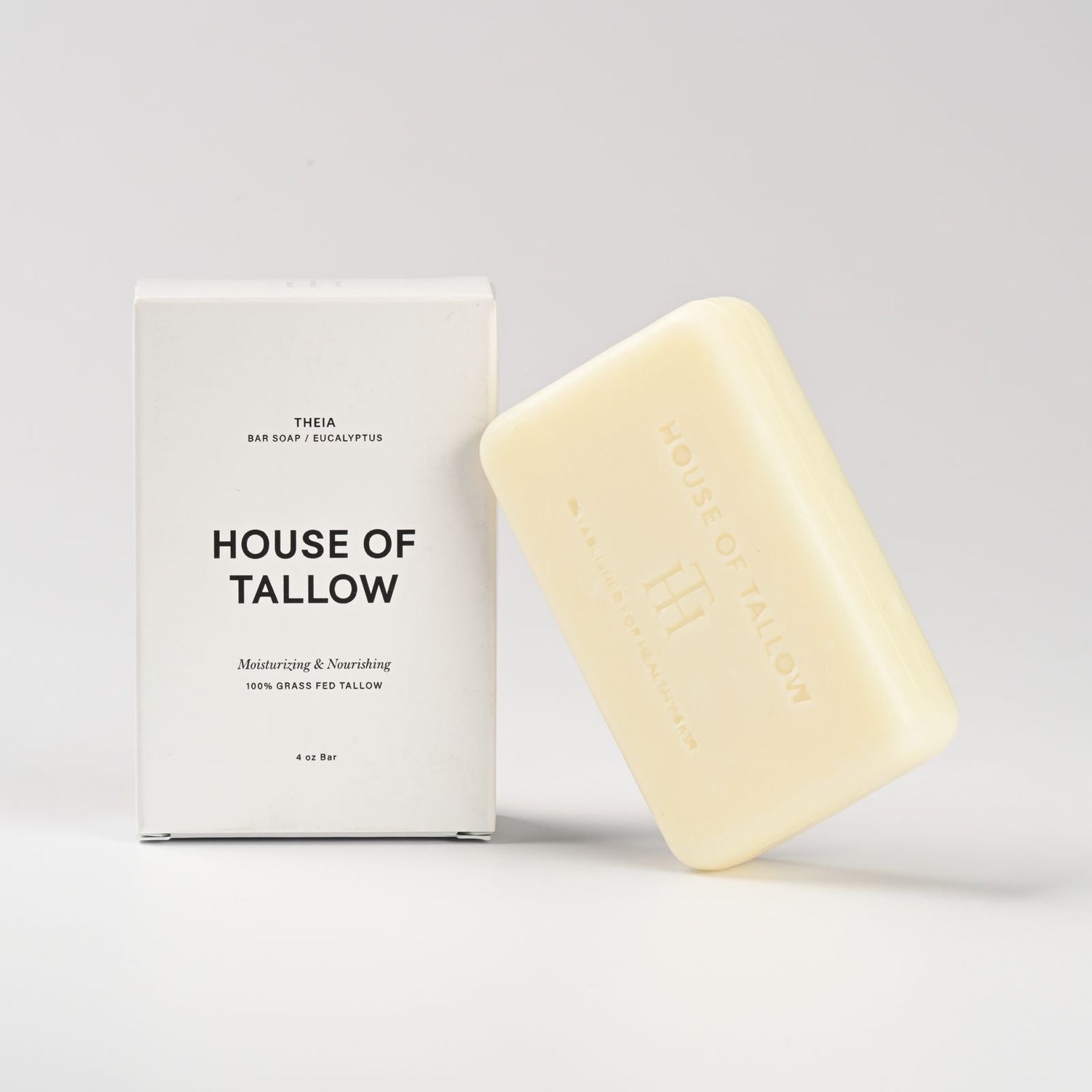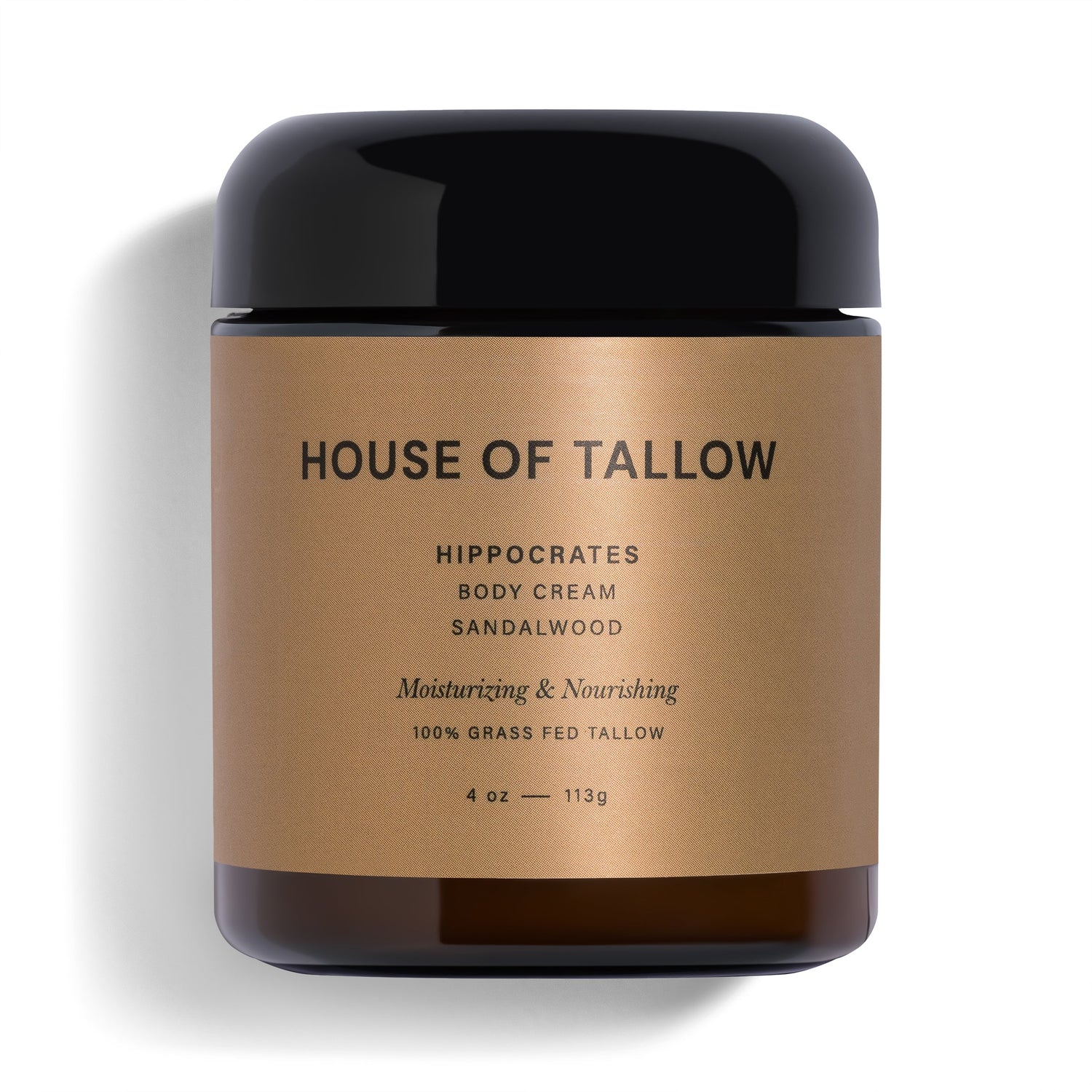Tallow-based skincare products are delicate and require proper storage to maintain their quality and effectiveness. Here's what you need to know:
- Room Temperature: Store daily-use items at 60–70°F for 6–12 months. Avoid sunlight and high humidity.
- Refrigeration: Extends shelf life to 1–2 years at 35–40°F. Ideal for long-term storage.
- Freezing: Keeps products stable for up to 2–3 years at 0°F or below. Use airtight, freezer-safe containers.
- Containers: Opt for dark glass jars or stainless steel to prevent contamination and preserve nutrients.
- Signs of Spoilage: Discoloration, mold, rancid smell, or texture changes mean it’s time to discard.
Shelf Life of Tallow Products: Storage Guidelines and Expiration Signs
Storage Temperature and Location Guidelines
Proper storage is key to maintaining the quality and effectiveness of tallow-based skincare products.
Room Temperature vs. Refrigeration
Tallow products for daily use are stable between 60-70°F. However, if the temperature exceeds 76°F (24°C), they can liquefy and lose their texture[1]. To preserve their quality:
- Keep them away from direct sunlight and heat.
- Maintain a steady temperature.
- Ensure ambient humidity stays between 35-45%[3].
Refrigerating these products can extend their shelf life from 6-12 months to 1-2 years[4]. When stored at 35°F to 40°F (1.7°C to 4.4°C), they remain stable but may need a short warming period before use[2]. These recommendations are essential before factoring in container choices.
Freezing for Extended Storage
Freezing tallow products at 0°F (-18°C) or lower can extend their shelf life to 2-3 years[4]. For best results when freezing:
- Use airtight, freezer-safe containers.
- Remove as much air as possible to prevent freezer burn.
- Label containers with the freezing date.
- Thaw them in the refrigerator overnight before use[2].
Table: Storage Location Guide
| Storage Location | Temperature Range | Expected Shelf Life | Best For | Special Considerations |
|---|---|---|---|---|
| Cool, Dark Cupboard | 60-70°F (15.5-21°C) | 6-12 months | Daily use items | Watch for seasonal temperature changes. |
| Refrigerator | 35-40°F (1.7-4.4°C) | 1-2 years | Long-term storage | Allow time to warm before use. |
| Freezer | 0°F (-18°C) or below | 2-3 years | Bulk storage | Requires proper thawing. |
| Bathroom | Varies | 3-6 months | Not recommended | High humidity increases spoilage risk. |
In hot, humid climates, refrigeration helps prevent melting and bacterial growth[2]. On the other hand, in cold, dry climates, room temperature storage often works well. Controlled humidity can also keep products from drying out excessively[3].
House of Tallow's preservative-free products especially benefit from careful storage. Refrigeration is ideal when these products are not in active use, particularly during warmer months[4]. Proper storage ensures their natural formulations stay effective.
Best Containers for Tallow Products
Glass, Steel, and Plastic Container Options
The type of container you use can significantly affect the shelf life and quality of tallow-based skincare products. Glass containers are often the top choice, especially dark amber or cobalt blue jars. These not only block harmful UV rays but also ensure the product remains unchanged since glass is chemically inert[1].
Stainless steel containers are another solid option, particularly for travel or outdoor use. They are durable, corrosion-resistant, and do not react with the product. While they may be more expensive, their longevity makes them worth considering[5].
For liquid or cream-based formulations, airless pump systems are highly effective. They limit exposure to air and contaminants, keeping the product fresher for longer. However, they're not ideal for thicker products and often come with a higher cost[2].
Plastic containers are widely available and budget-friendly but may interact with tallow over time. They also offer less protection against environmental factors. If you choose plastic, opt for high-quality, food-grade versions specifically designed for cosmetics[1].
Table: Container Material Comparison
| Material | Preservation Ability | Shelf Life Extension | Best For | Environmental Impact |
|---|---|---|---|---|
| Dark Glass | Excellent | Up to 12 months | All tallow formulations | Highly recyclable, reusable |
| Stainless Steel | Very Good | 6–12 months | Balms and solid products | Fully recyclable, long-lasting |
| Airless Pumps | Excellent | Up to 12 months | Liquid/cream formulations | Mixed recyclability |
| Plastic | Fair | 3–6 months | Short-term storage | Limited recyclability |
When choosing a container, consider features like wide-mouth openings for easy access, airtight seals with silicone or rubber gaskets, and interiors that won't react with the product.
If you're transferring tallow-based products into home containers, make sure the containers are thoroughly cleaned and completely dry to avoid contamination. For products from brands such as House of Tallow, it's a good idea to keep a small amount in the original packaging for reference to ingredients and expiration dates[1][2].
sbb-itb-a1b9fc0
How to Prevent Product Contamination
Keeping Products Dry and Clean
Store tallow products in a cool, dry place with temperatures between 60–70°F. Avoid areas like bathrooms or other humid spaces where temperature changes are common. If you're dealing with high humidity, consider placing a silica gel packet near (but not inside) your product to reduce moisture. Always ensure container lids are tightly sealed after use. Using the right tools for application is just as important for proper storage.
Tools and Application Methods
Before using your product, wash your hands thoroughly with soap and water. Use specific tools for each product type - like spatulas for balms, droppers for liquids, or wooden applicators for creams. After each use, clean and dry these tools completely. For wooden applicators, natural sanitizers like white vinegar or tea tree oil are effective. Replace applicators regularly to maintain hygiene.
Personal vs. Shared Product Use
If you're sharing tallow-based products, take extra precautions to avoid contamination. The best approach is to portion the product into separate containers for each user. When sharing can't be avoided, use pump dispensers or squeeze tubes and stick to individual portions to reduce the risk. Avoid sharing altogether if someone has a skin infection or open wound.
Pay attention to any changes in your product's color, texture, or smell - stop using it immediately if anything seems off. While natural preservatives like vitamin E or rosemary extract can help slow microbial growth, proper handling remains key.
How to Spot Spoiled Products
Changes in Look and Feel
Take a close look at tallow products and feel their texture to check for spoilage. Watch for any discoloration, such as yellowing or darkening from the original color [1]. Mold is another clear sign - if you see fuzzy patches in green, black, or white, it's time to throw the product away [1].
Pay attention to texture changes. If a smooth cream becomes grainy, lumpy, sticky, or starts separating into oil and solid parts, it's likely gone bad [1][2]. Other signs include unusual cloudiness, a shiny or dull appearance, or if the product turns unexpectedly runny, hard, or develops a dry, crumbly surface [1][2].
Smell Changes and Warning Signs
Odor is another key indicator of spoilage. Fresh tallow products usually have a mild, clean scent. If the product smells rancid (like old cooking oil), sour, or musty, it’s no longer safe to use [1][2]. A loss of the original fragrance or the presence of a chemical smell are also red flags [1][4].
| Warning Sign | What to Check | Action Required |
|---|---|---|
| Visual Changes | Discoloration, mold, separation | Dispose immediately |
| Texture Issues | Graininess, hardness/softness | Stop using right away |
| Odor Problems | Rancid, sour, or musty smell | Discontinue use |
Using spoiled products can lead to skin irritation, infections, or allergic reactions [1][2]. If you're unsure whether a product is still good, it's better to stop using it. Always prioritize safety over risk.
Conclusion: Storage Tips Summary
To keep tallow products in top condition and extend their shelf life, proper storage is key. For items used daily, aim for a temperature of 60–70°F. For medium-term storage, refrigerate at 35–40°F. For long-term storage, freeze at 0°F, though freezing for extended periods might slightly change the texture [1][2].
When it comes to containers, glass with airtight seals is the best choice to prevent oxidation. Food-grade plastic can work but offers less protection [3]. The right packaging plays a big role in keeping tallow products fresh [1][4].
Research backs these recommendations. A study by Tallow and Wild (October 2024) found that tallow balms stored in amber glass containers at room temperature retained 95% of their vitamin content after six months. In contrast, balms in clear containers retained only 85%. This highlights the importance of choosing the right container - something premium brands like House of Tallow prioritize in their packaging.
| Storage Duration | Recommended Method | Expected Shelf Life |
|---|---|---|
| Daily Use | Room temperature (60–70°F) | 6–12 months |
| Medium-term | Refrigeration (35–40°F) | 12–18 months |
| Long-term | Freezing (0°F) | Up to 2 years |
To avoid contamination, always use clean hands or dedicated applicators and keep lids tightly sealed [3][4]. Following these steps will help ensure your tallow products stay fresh and effective for their entire shelf life.




